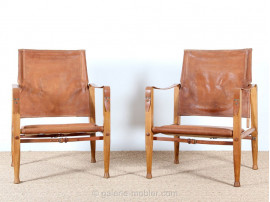
Rud Rasmussen
First generation - Rudolph Rasmussen
Rud. Rasmussen has produced its own furniture since 1869, when Rudolph Rasmussen set up his cabinetmaking business in Copenhagen.
Rudolph Rasmussen did his apprenticeship with a cabinetmaker in Aarhus in 1857, and his career took off four years later, when he moved to Copenhagen and began to work for the royal cabinetmaker I. G. Lund. At Lund, the young Rudolph Rasmussen was given ample opportunity to develop his draughtsmanship and became adept at using cabinetmaking machinery. Rasmussen was entrusted with several important commissions, including building Lund's stand at the industrial exhibition in Stockholm in 1866 - a project that earned him enough capital to start up on his own. He worked out of small, rented premises in central Copenhagen for the first few years, moving to his own premises in St. Kongensgade in 1874.
Shortly after, while Rudolph Rasmussen was involved in a large job making furniture for Hotel d'Angleterre in Copenhagen, his workshop burned down.
RR_Factory_03_w.236.jpg
However, the furniture maker used the insurance payment of 10,000 Danish kroner to finance a move to the vibrant Nørrebrogade street in Copenhagen. Together with his brother-in-law, the master cabinetmaker J.C. Groule, who specialized in polished mahogany and walnut furniture, Rudolph Rasmussen bought the plot on the corner of Stengade and Nørrebrogade - where the company remains to this day.
Oak furniture factory
Groule and Rasmussen first built a residential property overlooking Nørrebrogade and a four-storey factory building facing Stengade, from where they ran their furniture business, in 1875. There was a boiler in the basement of the factory building and a steam engine and a small group of other machinery on the ground floor.
The upper floors were fitted out as workshops for the craftsmen. Rudolph Rasmussen named his company Rud. Rasmussens Fabrik for Egetræsmøbler (Rud. Rasmussen's Factory for Oak Furniture). In using the word "factory," he probably wanted to send a message that he was focusing on streamlined, large-scale operations. Machinery had transformed the furniture-making trade, making it possible to cut wood to exact and uniform dimensions - and freeing up resources for tasks such as carving the wood as well as varnishing, polishing, and assembling the furniture. Rud. Rasmussen soon established a reputation for well-made oak furniture, and demand grew.
When Martin Nyrup's new City Hall was completed at the beginning of the 20th century, the local authority in Copenhagen became one of Rud. Rasmussen's biggest customers.
Rudolph Rasmussen often designed the furniture himself, but was also assisted by well-known Danish architects such as Vilhlem Dahlerup and Thorvald Bindesbøll.
Second generation - Rudolph's sons, Rudolf and Victor
When Rudolph Rasmussen died in 1904, his sons Rudolf and Victor Rasmussen took over and jointly realized their father's plans to build a new, larger factory, which was completed in 1911.
The new facility no longer used belt drives, but only electrical machines powered by a new steam engine with a dynamo in the basement - a setup that freed up space for a machinery workshop on the ground floor and a cabinetmakers' workshops on the first floor and on parts of the second floor. The old factory was converted into offices, storage facilities, and showroom.
Commissions to supply furniture to the public authorities rolled in. The police station, the postal service, various ministries, the technical university, and hospitals all commissioned furniture from Rud. Rasmussen, but the company also accepted orders for smaller pieces of furniture or new windows, for example, for private homes. "It is these small, one-off commissions that keep a furniture maker from becoming set in his ways," said Rudolf and Victor.

